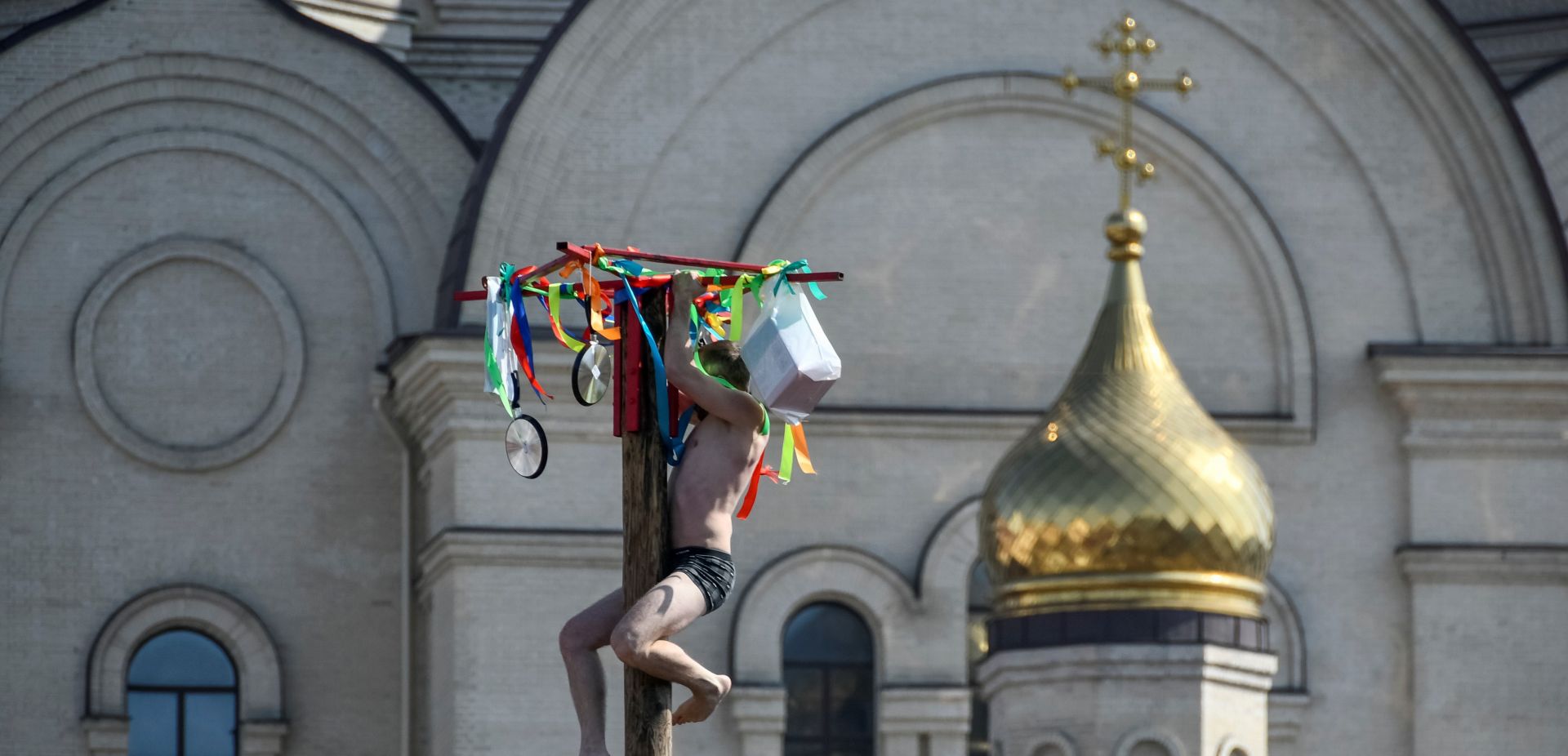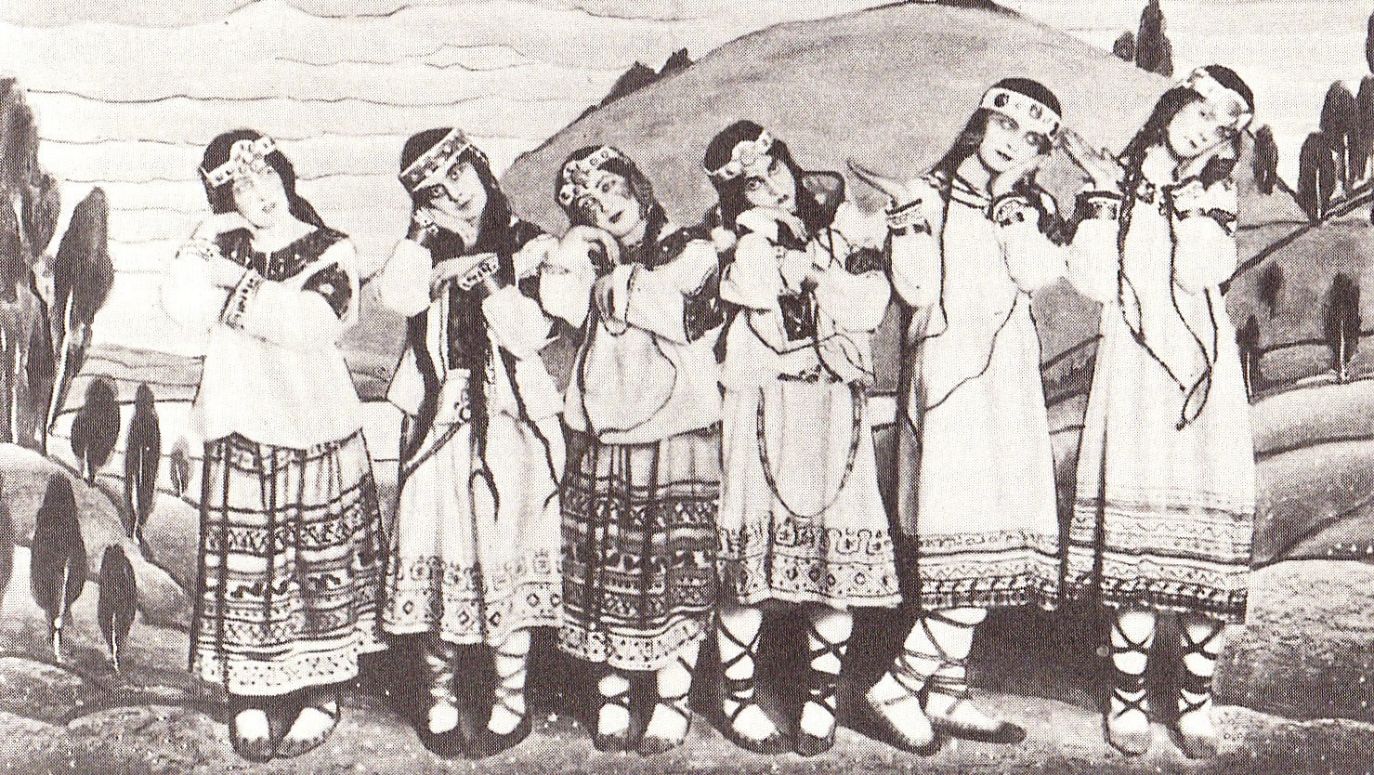He dealt not only with art, but also with matters at the intersection of politics and religion. He was inspired by Tibetan Buddhism and other esoteric currents of Asian spirituality. He was associated with the Theosophical movement and traveled a lot. He gained influence in the White House and worked for the protection of cultural treasures (in this respect he led 21 countries of both the Americas to sign the Washington Pact in 1935). Twice nominated for the Nobel Peace Prize, he met with politicians such as the future prime ministers of India -- Jawaharlal Nehru and his daughter Indira Gandhi. Yet some were to claim, although it was never fully proven, that he was a Soviet agent.
Certainly, Roerich at some stage of his life was openly pro-Soviet, although his was rather the role of a "useful idiot" for the Kremlin. The artist had a vision of an alliance between Soviet communism and the spirituality of the East. In 1926, he went to Moscow to present the USSR's People's Commissar for Foreign Affairs, Georgy Chicherin, with a document purported to be a message from the "mahatmas" (sages from the Himalayas), worshiping the Soviet state.
The text, possibly written by Roerich himself, included these words: "You have liquidated the Church, which was a breeding ground for lies and superstitions. You annihilated the bourgeoisie, which was a seedbed of prejudice. You have demolished the prison of education. You annihilated a family of hypocrisy. You burned an army of slaves. (…) You have recognized the vanity of private property. You have recognized that religion is the teaching of the universality of matter. (…) You saw the urgent need to build houses of common good”.
Roerich also handed the Soviet authorities a box containing soil from the Himalayas. The painter claimed that it was a gift from the "mahatmas" with the message: "For the grave of our brother, mahatma Lenin".
Chicherin, as befits a diplomat, was polite to Roerich. But the casket, rather than being sent to the mausoleum of the Soviet Union's first leader, accompanied the message and ended up in the Lenin Institute in Moscow. This did not mean that the painter's mission had been ignored. Roerich had reasons to hope that his concept of an alliance between Soviet Communism and Tibetan Buddhism might be of interest to the USSR authorities.
Throughout the Soviet Union's existence, there was never a shortage of people interested in parapsychology, occultism or unconventional medicine. Already in the 1920s, in the Cheka [the first of a succession of Soviet secret-police organizations], headed by Felix Dzerzhinsky, there was a special department that not only carried out tasks such as cryptographic analysis, but also collaborated with people investigating paranormal phenomena. (Why this was done remains a matter of debate). Even the cult of the mummified Lenin had a quasi-religious character.
Officially, the USSR was an atheist state, which meant that it was supposed to be the heir to humanism, the Enlightenment and other progressive trends in European history. Meanwhile, beneath the surface of the propagandistic incantations justifying the existing doctrine, elements alien and hostile to the West pulsated. They can still be encountered in the Russian "glubinka" [wilderness] today and currently set the tone for the Kremlin's policy.
Could "The Rite of Spring” – a ballet associated with European modernity, one with the status of a cult work in the West – be a manifestation of these elements?
–Filip Memches
TVP WEEKLY. Editorial team and jornalists
–Translated by Agnieszka Rakoczy 

 SIGN UP TO OUR PAGE
SIGN UP TO OUR PAGE 




